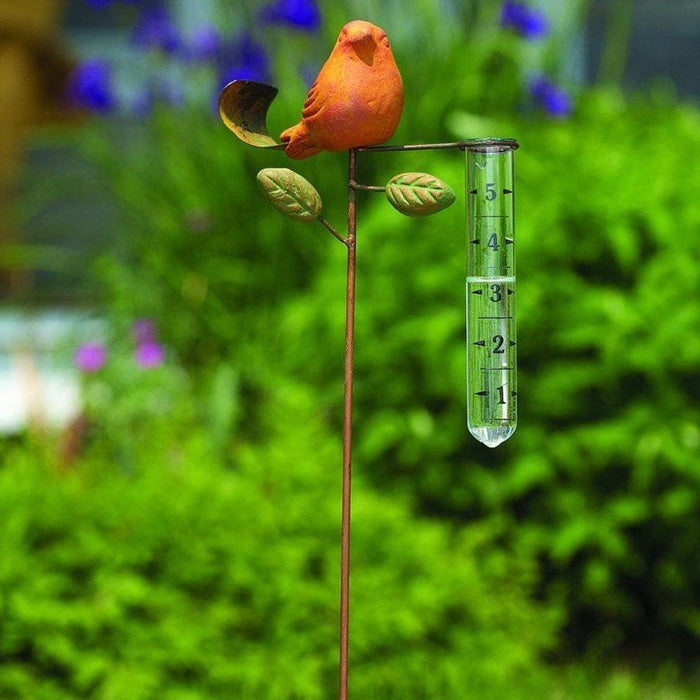The Rain Gauge: Decoding Rain Patterns and Enhancing Weather Understanding
The Rain Gauge: Decoding Rain Patterns and Enhancing Weather Understanding
Blog Article
Exactly How to Select the Right Rainfall Gauge for Accurate Rainfall Information
To acquire reputable measurements, it is crucial to select the best rainfall gauge. Taking into consideration factors such as area, type, and precision of the rain scale will aid make sure precise information collection. Furthermore, comprehending the maintenance and calibration treatments will certainly contribute to the long life and reliability of your rainfall gauge.
Relevance of Choosing the Right Rain Gauge
The value of choosing the appropriate rain scale lies in getting accurate and reliable rainfall information for accurate atmospheric evaluation. Rainfall data is crucial for a large range of applications, including weather condition forecasting, hydrological modeling, and climate research study. Inaccurate or undependable data can cause wrong conclusions and flawed decision-making processes.

Secondly, the precision and precision of the rainfall gauge are paramount. The scale ought to be able to measure rains with high precision, recording also small amounts of rainfall accurately.
In addition, the place and setup of the rainfall gauge are crucial factors to consider. It ought to be positioned in an open area, away from obstructions that could influence rainfall dimensions. The gauge needs to be positioned at an appropriate elevation and angle to avoid spilling and guarantee proper catchment of rainwater.
Factors to Think About When Picking a Rainfall Gauge
When choosing a rain scale, there are numerous essential variables to consider. There are different types readily available, consisting of typical rainfall gauges, tipping bucket rain evaluates, and evaluating rain evaluates.
One more aspect to think about is the material of the rain gauge. Rain gauges can be made of various products, such as plastic, glass, or steel. The material chosen should be immune and sturdy to climate condition, making certain that the rainfall scale will endure the elements and provide exact dimensions gradually.
Accuracy is also an important element to consider. Seek rainfall evaluates that have been adjusted and checked for accuracy. Attributes such as anti-splash rings and funnels can additionally enhance the accuracy of the measurements.

Last but not least, think about the environment and environment in which the rainfall scale will be made use of. Different rain determines are appropriate for different environments, so it is essential to pick one that is appropriate for the problems in your location.
Different Kinds Of Rainfall Gauges Offered
To better explore the aspects to consider when choosing a rain scale, it is very important to comprehend the various kinds of rain evaluates readily available. There are numerous kinds of rain assesses, each with its very own benefits and drawbacks. The most usual kind is the common rainfall scale, also known as the cylindrical rain scale. This kind includes a straight-sided cylindrical container with a funnel-shaped top. It is easy to utilize and gives exact measurements of rainfall.
An additional type of rain scale is the tipping bucket rainfall gauge. As the rainfall drops into the scale, it fills up one side of the bucket, creating it to clear the water and tip.
A 3rd type of rainfall gauge is the considering rain scale. This scale uses an equilibrium system to determine the weight of the accumulated rains. As the rain falls under the gauge, it is accumulated in a container linked to an equilibrium. The weight of the water is determined, and the rains quantity is determined based upon the weight. Evaluating rain assesses are highly precise but can be extra costly and require normal maintenance.
Lastly, there are additionally remote rain assesses that usage advanced modern technology to determine rains (The Rain Gauge). These gauges usage sensors and transmitters to send out information wirelessly to a central device. Remote rain assesses are convenient for keeping an eye on rains in hard-to-reach areas or for massive information collection
Exactly How to Figure out the Precision of a Rain Gauge
One method to you could try this out assess the precision of a rainfall gauge is by performing routine calibration dimensions. Calibration entails contrasting the readings of a rainfall scale to a basic measurement, such as a licensed rainfall scale or a weather station with high accuracy. By comparing the measurements, any type of discrepancies or mistakes in the rainfall scale can be determined and made up.
To perform a calibration dimension, beginning by accumulating rains information from both the rainfall scale and the basic measurement gadget over a particular time duration, such as a month. Compare the analyses and compute the distinction in between them. This distinction is understood as the calibration mistake.
It is essential to keep in mind that calibration dimensions must be done on a regular basis, as environmental elements, such as wind, temperature, and particles, can affect the precision of the rainfall gauge over time. By performing routine calibrations, any changes in the precision of the rain gauge can be detected and changes can be made appropriately.
Along with calibration, it is also recommended to clean and keep the rain try this scale on a regular basis to ensure its accuracy. Eliminate any particles or obstructions that may influence the accuracy of the measurements, and look for any indicators of damage or wear that might need repairs or substitute.
Tips for Keeping and Calibrating Your Rain Scale
Regular maintenance and calibration are essential for making sure the precision and integrity of your rainfall gauge in gauging rainfall data (The Rain Gauge). By complying with a couple of easy pointers, you can guarantee that your rainfall scale is correctly kept and adjusted
Firstly, it is necessary to clean your rain gauge regularly to stop any kind of particles or dirt from obstructing the rainfall collection device. Use a mild detergent and a soft brush to gently clean the inside and exterior of the scale. Wash it thoroughly with clean water and allow it to dry totally prior to re-installing it.
Second of all, it is recommended to calibrate your rain gauge at least when a year. Calibration entails contrasting the dimensions of your rainfall scale with those of a trusted and accurate recommendation scale. This will help you identify and fix any type of prospective mistakes in your rain gauge's measurements.
To calibrate your rain gauge, gather a recognized volume of water utilizing a gauging container and contrast it with the dimensions taped by your rain gauge. Change the readings appropriately to guarantee accuracy.

Conclusion
In conclusion, picking the appropriate rainfall gauge is important for obtaining accurate rains information. Aspects such as budget, area, and purpose must be considered when selecting a rain read more gauge. There are various types of rainfall evaluates readily available, each with their own benefits and constraints. It is essential to frequently keep and calibrate your rainfall scale to ensure its accuracy. By complying with these standards, precise rains information can be obtained for different applications.
There are various kinds available, including standard rain assesses, tipping bucket rainfall assesses, and considering rain gauges.To even more check out the variables to consider when choosing a rain gauge, it is crucial to comprehend the different types of rain gauges available. The most common kind is the standard rainfall gauge, likewise recognized as the round rain scale.Another type of rainfall scale is the tipping container rain gauge. Calibration entails contrasting the readings of a rain scale to a standard dimension, such as a qualified rain gauge or a weather terminal with high accuracy.
Report this page